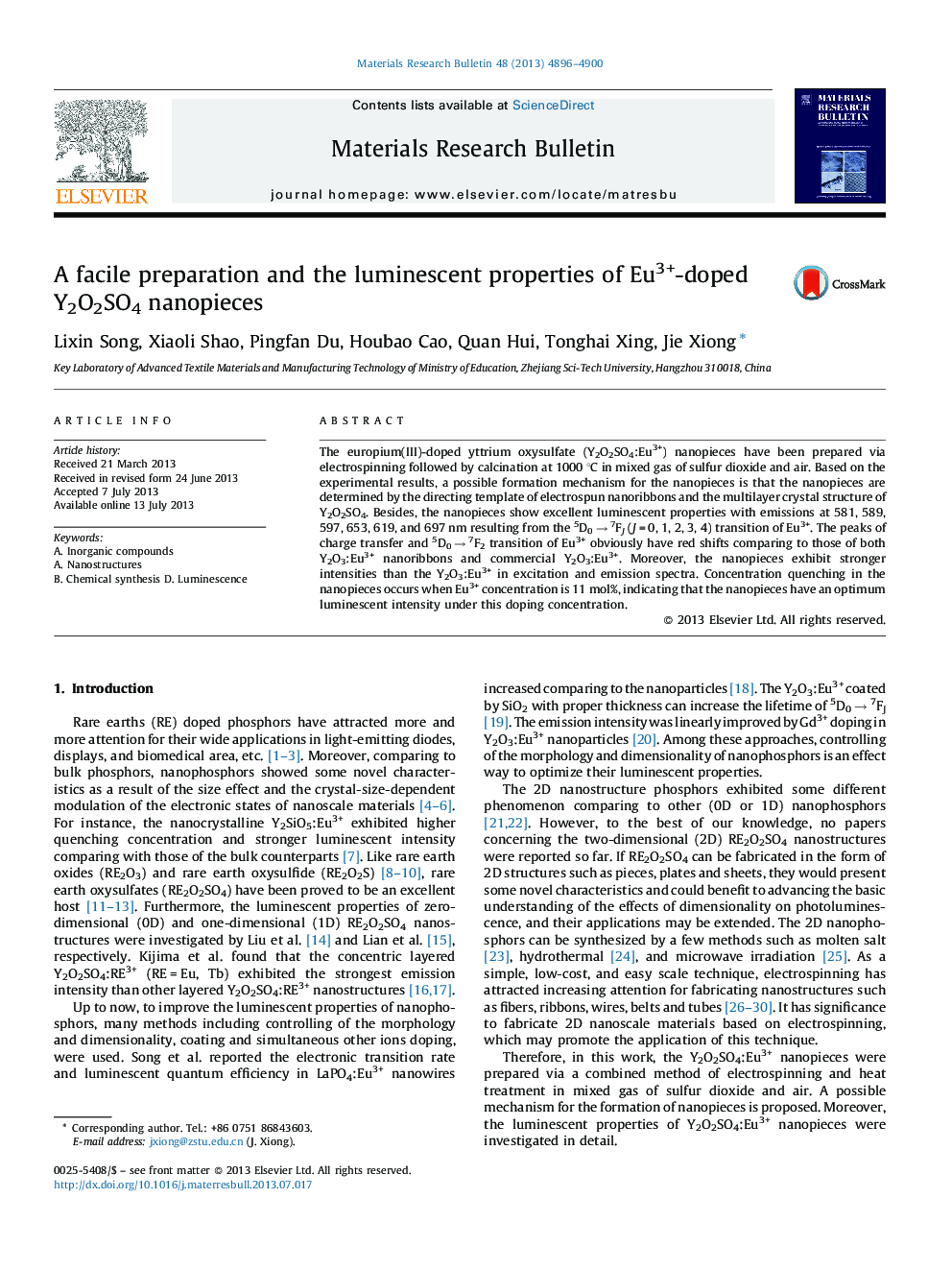| Article ID | Journal | Published Year | Pages | File Type |
|---|---|---|---|---|
| 1488982 | Materials Research Bulletin | 2013 | 5 Pages |
•Y2O2SO4:Eu3+ nanopieces were prepared via electrospinning followed by calcination.•The photoluminescence of Y2O2SO4:Eu3+ nanopieces were investigated.•The Y2O2SO4:Eu3+ was compared to nanoribbons and commercial Y2O3:Eu3+.•The potential applications of the nanopieces and the facile method are suggested.
The europium(III)-doped yttrium oxysulfate (Y2O2SO4:Eu3+) nanopieces have been prepared via electrospinning followed by calcination at 1000 °C in mixed gas of sulfur dioxide and air. Based on the experimental results, a possible formation mechanism for the nanopieces is that the nanopieces are determined by the directing template of electrospun nanoribbons and the multilayer crystal structure of Y2O2SO4. Besides, the nanopieces show excellent luminescent properties with emissions at 581, 589, 597, 653, 619, and 697 nm resulting from the 5D0 → 7FJ (J = 0, 1, 2, 3, 4) transition of Eu3+. The peaks of charge transfer and 5D0 → 7F2 transition of Eu3+ obviously have red shifts comparing to those of both Y2O3:Eu3+ nanoribbons and commercial Y2O3:Eu3+. Moreover, the nanopieces exhibit stronger intensities than the Y2O3:Eu3+ in excitation and emission spectra. Concentration quenching in the nanopieces occurs when Eu3+ concentration is 11 mol%, indicating that the nanopieces have an optimum luminescent intensity under this doping concentration.
Graphical abstractFigure optionsDownload full-size imageDownload as PowerPoint slide
